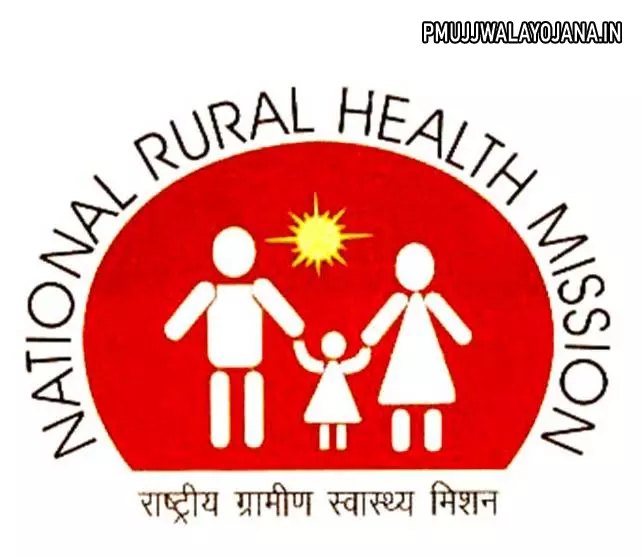Rashtriya Gramin Swasthya Mission helps people living in rural India get easy and affordable healthcare. Often, people in rural areas face challenges in accessing health services, which can lead to serious health issues or even death. To address this, the government started the Rashtriya Gramin Swasthya Mission on 12 April 2005. This mission focuses on providing good health protection, especially to women, children, and elderly people in poor rural families across all states of India.

Rashtriya Gramin Swasthya Mission 2025
Rashtriya Gramin Swasthya Mission, also called the National Health Rural Mission, is an important effort by the central government to offer better healthcare services for people living in rural and remote parts of India. It started in 2005 and expanded in 2013 to include urban areas too, being renamed the National Health Mission.
This mission includes both the National Rural Health Mission (NRHM) and the National Urban Health Mission (NUHM) under the Ministry of Health and Family Welfare. Its main aim is to provide health services especially to the poor sections of society, focusing on women, children, and needy people in rural areas.
About Rashtriya Gramin Swasthya Mission
| Article Name | Rashtriya Gramin Swasthya Mission |
| Started By | Central Government |
| Start Date | 12 April 2005 |
| Department | Ministry of Health and Family Welfare |
| Beneficiaries | Citizens of all Indian states |
| Purpose | To provide health protection to citizens |
| Official Website | https://nhm.gov.in/ |
Main Purpose of National Health Rural Mission
The central government started the National Health Rural Mission to provide good and affordable health protection to people in rural areas. It offers better medical services to people in remote locations who often don’t get proper healthcare due to money problems.
This mission mainly focuses on women, children, and elderly in rural families. The goal is to improve health services and help reduce health problems across rural India.
Main Goals of Rashtriya Gramin Swasthya Mission
This mission has set specific goals to give better health facilities to rural people, women, and children. These goals include:
- Reducing cases of diseases like malaria and dengue each year.
- Promoting a healthy lifestyle through the mission.
- Lowering the number of maternal and infant deaths.
- Making healthcare easy to reach for women and children.
- Preventing and controlling local infectious and non-infectious diseases.
- Focusing on states with weaker health records.
- Encouraging alternative medicine systems.
- Strengthening local government bodies.
- Boosting healthcare services with support from ASHA workers.
- Preventing diseases like tuberculosis and leprosy.
- Reducing out-of-pocket expenses on healthcare.
- Vaccinating all rural children across the country.
- Supporting population control and gender balance.
- Providing clean drinking water and proper sanitation facilities.
Selected States Under Rashtriya Gramin Swasthya Mission
The mission focuses on states with weak health conditions. The government selected 18 states to improve health facilities under the National Health Rural Mission:
| 1. | Himachal Pradesh | 10. | Jammu & Kashmir |
| 2. | Assam | 11. | Nagaland |
| 3. | Meghalaya | 12. | Chhattisgarh |
| 4. | Rajasthan | 13. | Odisha |
| 5. | Sikkim | 14. | Bihar |
| 6. | Madhya Pradesh | 15. | Arunachal Pradesh |
| 7. | Tripura | 16. | Manipur |
| 8. | Mizoram | 17. | Uttarakhand |
| 9. | Uttar Pradesh | 18. | Meghalaya |
Work Policies of National Health Rural Mission
- Strengthening rural health centers and providing needed facilities.
- Setting clear rules and standards for the mission and its work.
- Increasing government spending on health services.
- Sharing progress and goals with the public.
- Partnering with private health sectors to improve service.
Improvements Under Rashtriya Gramin Swasthya Mission
- Primary Health Care Centers Development – The government builds new buildings and buys essential equipment for primary health centers. They also provide medicines and hire female health workers (ANMs) where needed.
- Female health workers (ANMs) get Rs 1000 in their bank accounts to help with rural healthcare costs when needed.
- Primary health centers now offer 24-hour services with a team including nurses and doctors from Ayurveda, Unani, and Homeopathy to make sure people get timely treatment.
- Committees on social science and accountability work at village, district, and state levels.
- A monitoring group checks the ASHA program.
- Community Health Care Centers have been chosen across the country to provide 24-hour health services to citizens.
- ASHA workers help deliver health services in rural areas effectively.